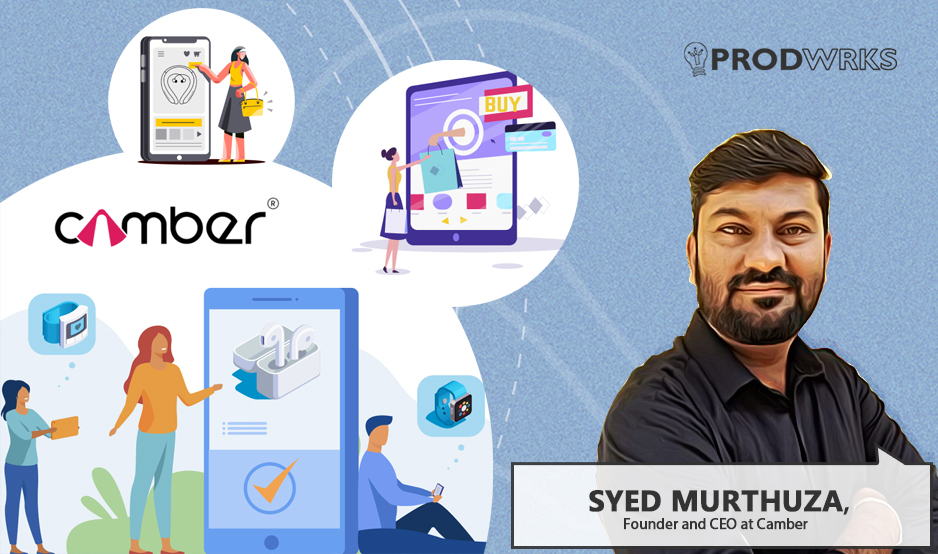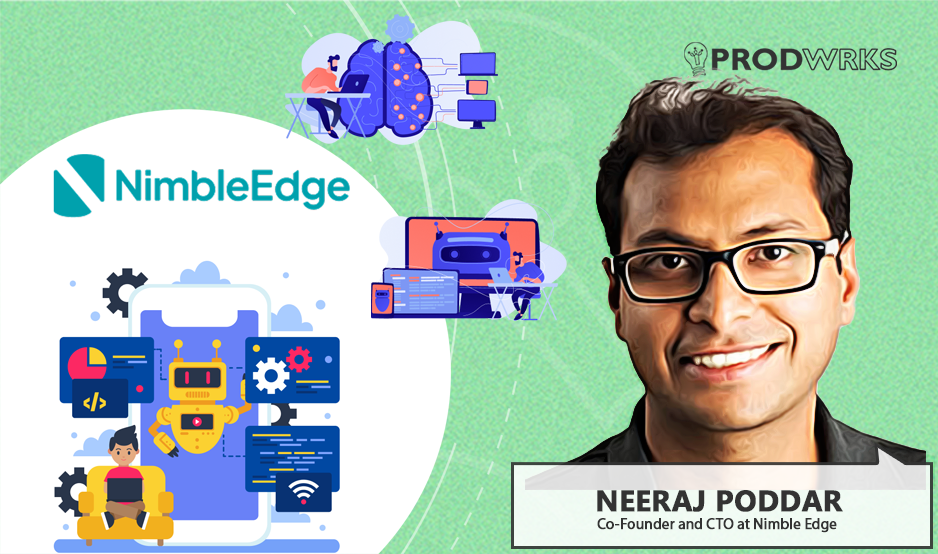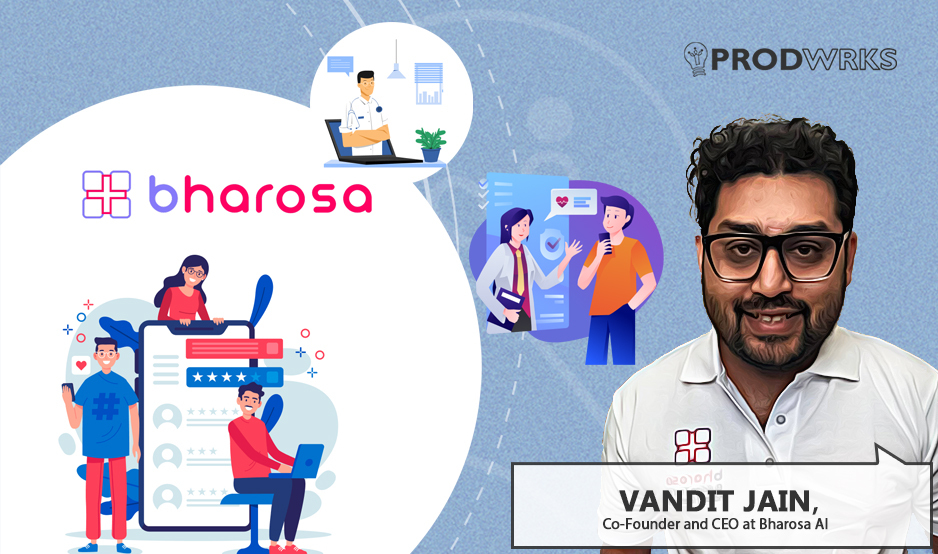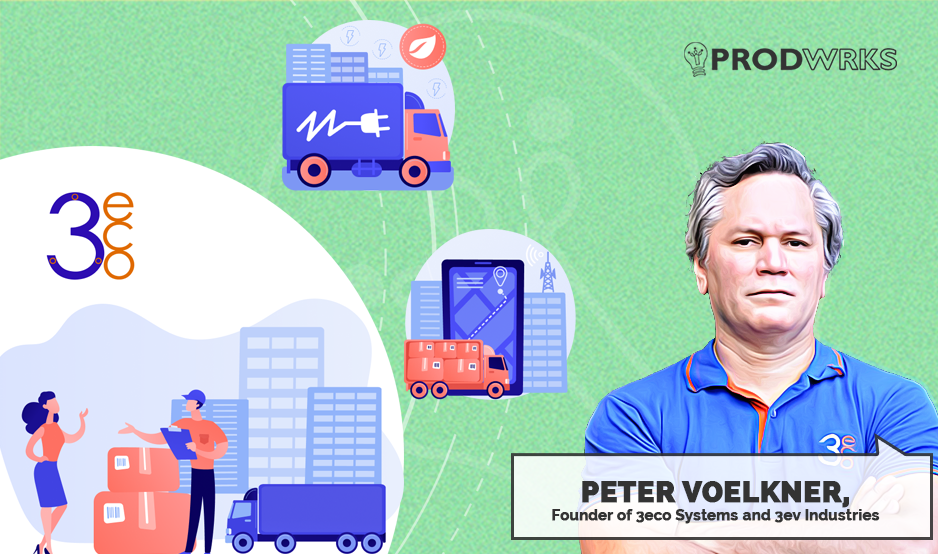
India’s booming urban logistics market runs on a last-mile delivery network that is notoriously chaotic. It’s a ballet of two-wheelers, auto-rickshaws, and light commercial vehicles (LCVs) weaving through congested roads, ferrying people and parcels. Though this network is the lifeblood of a nation hurtling towards a multi-trillion-dollar economy, it’s a system of fragmented operators, underutilized vehicle fleets, and a gig workforce with little stability.
Where many see this as an unsolvable mess, American investor and 3x startup founder, Peter Hartmut Voelkner, saw a classic systems engineering challenge. His solution wasn’t a single product or a business, but a system. Two, in fact.
First, 3ev Industries, a manufacturer of purpose-built, heavy-duty L5 category electric 3-wheelers tailored for Indian logistics and supply chain networks. Second, 3eco Systems, a tech-led logistics operator that runs these EV 3-wheelers with data-driven efficiency for giants in e-commerce and logistics. Together, Peter’s startups (3ev Industries and 3eco Systems) represent an ambitious attempt in the EV space to solve India’s last-mile puzzle by building a new, vertically integrated, data-driven operating system to manage it.
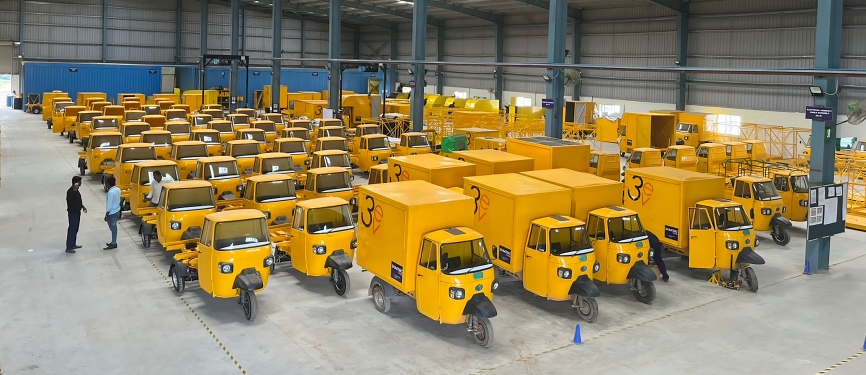
Today, 3eco Systems operates a fleet of over 1,400 electric vehicles, powered by a team of 1,500 trained “service professionals,” not gig workers. They run sophisticated Fleet Operating Stations (FOS) across five major Indian cities (Bengaluru, Chennai, Hyderabad, Mumbai, and Coimbatore), serving a blue-chip roster of clients including Amazon, Flipkart, and BigBasket.
With demand from existing customers for over 7,000 EV L5 three-wheelers, the company is spearheading the adoption of EVs in the commercial space, one that Peter believes is built on a foundation of sustainable economics, not FAME subsidies. This is the story of how a systems thinker from the “outside” is rewiring the engine of supply chain in India from the ground up.
The Outsider's Diagnosis of India’s Last-Mile Troubles
To understand the genius of Peter’s approach, one must first understand the problem he chose NOT to solve. In the early days of India’s EV wave in India’s last-mile transportation, the narrative was simple: build an electric 3-wheeler to replace the ubiquitous ICE (internal combustion engine) auto-rickshaw.
But Peter’s saw something different in 2020 when he first started. E-commerce giants like Amazon and Flipkart weren’t using 3-wheelers for their last-mile deliveries. Their workhorse was a four-wheel one-tonne light commercial vehicle (LCVs like the Tata Ace). So he aptly recognized that the real opportunity was to challenge the inefficient, hulking four-wheel LCVs.
Peter says, “Our 3-wheel cargo EVs (L5) do not compete with ICE 3-wheelers. They compete with LCV 4-wheelers that are normally about 1 Ton. That means they are purpose-built and heavy-duty with high reliability, high payload capacity, and long-range capabilities.”
“Two half-ton EVs can do the work of a single 1-ton ICE LCV in less than half the time in local logistics because of the high density of local deliveries,” he explains.
ICE LCVs vs. L5 EV 3-Wheelers
“When you buy an ICE (internal combustion engine) LCV, you're buying the vehicle and an empty gas tank. The money that you're spending is to fill that tank with diesel fuel, and then all the maintenance. So it's all variable cost.”
“Here, you're buying the vehicle. But you're also buying the battery, which is like buying a gas tank that's been pre-filled for 10 years (excluding minimal cost for charging). Imagine if you had to buy a Tata Ace, and you had to pay for the diesel for the next 10 years on day one. Can you imagine the price?”
“Once you make that investment in commercial EV, you have to start bringing revenue in right away. A very high utilization rate is required for EVs to be commercially viable,” says Peter.
A fragmented market of small, technologically unsophisticated fleet operators was simply not equipped to do this. They lacked the scale, the customer relationships, and the operational discipline to do regular runs.
The final piece of Peter’s diagnosis was the ecosystem void. If an ICE vehicle breaks down a roadside mechanic can fix it. But, if an EV breaks down, who fixes it? Who ensures the battery is charged safely and maintained for a long life? Selling an EV vehicle and walking away was, in his view, “not a responsible business practice.” It would create more problems than it solved.
So Peter surmized that the Indian market didn’t just need a vehicle. It needed a full-stack turnkey solution.
The Full Stack Solution: 3ev Industries and 3eco Systems
Having diagnosed the systemic failures, Peter’s prescription was a vertically integrated model where EV manufacturing and fleet operations work in a tightly-coupled, symbiotic loop.
This is the core of the 3ev/3eco synergy. 3ev Industries acts as the dedicated Original Equipment Manufacturer (OEM), designing and building the heavy-duty L5 vehicles that 3eco needs. 3eco Systems, its largest customer, then deploys these vehicles in the field, generating a torrent of real-world data and operational feedback.

This feedback loop is crucial. When 3eco needed a vehicle with a 120-cubic-foot cargo box and over 100 km of real-world range to serve clients like Amazon, 3ev Industries built it. Other OEMs, Peter notes, weren’t listening to the market’s specific needs.
This integration also solves the ecosystem problem.
“For high utilization, we need minimum vehicle downtime. This is another reason why our affiliation with our own OEM is critical. 3ev Industries not only build the EVs, they provide a 5-year warranty and 5 years aftermarket battery rental as well as maintenance and service contract. Since we utilize our vehicles at 85%+, we can't have vehicles going down.”
Integrating the Full-Stack Solution
Peter clarifies that his definition of “full-stack” is primarily operational. It’s based on a hub and spoke model. 3eco’s hubs, or Fleet Operating Stations (FOS), hold the entire operation together.
Their FOS are far more than just parking and charging depots. They are tightly controlled environments for vehicle maintenance, battery management, route dispatch, and even value-added services like micro-warehousing and dark store operations for clients like Zomato.
This asset-centric model seems counterintuitive in an age of asset-light platforms. But Peter pushes back on the “asset-heavy” label, when we questioned him.
“We are not asset heavy. When you look at our capital efficiency, it is better than any other startup in our space. We match our cashflows carefully, making sure investments in physical and human resources only happen when we have a guaranteed, long-term, and recurring revenue stream attached to it.”
The Human Stack: Elevating Gig Workers to Service Professionals
“Most logistics players assume a gig worker model is the only way to go. But this produces highly inconsistent operations, high cost from attrition, customer dissatisfaction, and commodity revenues with low utilization.”

At 3eco, his counter-move was to professionalize the role of the driver and turn them into “service professionals” (SPros). SPros receive formal training, wear professional uniforms, and are given a clear career path. They are not paid by the delivery but are full-time employees with a predictable schedule and income.
This is a change in philosophy that’s rooted in Peter’s belief in “stakeholderism” over pure, extractive “capitalism” in gig workforce today. It’s also a core business strategy that reduces attrition, ensures service consistency, and enables the high levels of discipline required to achieve an 85% utilization rate, that Peter mentioned.
EPRO: The Digital Twin That Turns Fleet Operations Into a Science
If the FOS hubs are the skeleton and the SPros are the muscle, then EPRO is the central nervous system for 3eco Systems. EPRO, short for Efficiency and Productivity Resource Optimization, is 3eco’s proprietary technology platform, the engine that powers its entire fleet operation.
Peter describes it not just as a dashboard, but as a “virtual twin” of the entire business.
He says, “Our entire business is data-driven. We understand our operations in terms of discrete empirical data streams that we collect on a daily basis, scrub for data integrity, and process through our data analytics team.”
The process is methodical.
1. Data Streams: Raw data is captured from every corner of the operation, be it vehicle telematics, SPro attendance via a mobile app, delivery completions, cash-on-delivery collections, maintenance logs, and customer escalations.
2. Metrics: This data is processed into key performance indicators (KPIs) like revenue per vehicle, deliveries per hour, kilometers per shift, vehicle uptime, etc.
3. Benchmarking: These metrics create a historical benchmark, a numerical description of past performance. This historical model is the virtual twin of the fleet operations.
4. Gap Analysis: The real magic happens when this virtual twin is used for predictive modeling and performance management.
Peter says, “EPRO operates like a virtual twin where we have target levels for metrics and performance levels, and then we compare actual daily results against this plan.”
He provides a concrete example. Suppose the historical data shows a vehicle generates an average of ₹1800 in daily revenue on a standard 10-hour shift. The data analytics team can run a simulation in EPRO: What happens if we move to a 16-hour shift model?
The simulation might show that a ₹900 lift in revenue comes at an additional cost of only ₹200 paid to the driver to work the extra shift, creating a massive ₹700 in marginal cash flow. EPRO allows them to turn this simulation into an operational plan and track the gap between the target and the actual performance in real-time.
This system also identifies outliers. A positive outlier, for instance, an SPro who is consistently 30% more productive or 80% safer can be studied, and their best practices can be codified and scaled across the entire 1,500-person workforce. Similarly, a negative outlier can be identified for retraining or removal.
“The leverage that we get from that information resource is massive,” Peter says.
The Commercial Proof
3eco System’s and 3ev Industries’ tightly integrated system of premium EV vehicles, controlled hubs, professional drivers, and a powerful data engine culminates in a formidable commercial advantage. The case study with Amazon is a masterclass in process engineering.
As Peter explained, a one-ton diesel LCV would service a route in a serial process, taking up to three two-hour delivery slots to complete its run and return empty. 3eco replaced this with a parallel process.
“We replaced that one light commercial vehicle with two of our electric vehicles. They would both go out in parallel. Any parallel process is going to be more efficient than a serial process.”
The results were staggering. The two 3ev vehicles could deliver the same one-ton payload not in six hours, but in as little as two. The single LCV might complete 1.5 routes a day, moving 1.2 tonnes of goods. The two 3eco vehicles could complete three full routes, moving a total of 3 tonnes.
Furthermore, the LCV often required a driver and a separate delivery person. 3eco’s SPro drives the smaller vehicle right to the customer’s door, doing the delivery themselves, saving an entire salary. More work, less time, lower cost. This is the value proposition that has won them contracts with India’s largest enterprises.
This efficiency translates directly to a robust and sustainable business model, one that works even without the benefits derived from Indian government’s subsidies like FAME (Faster Adoption and Manufacturing of Electric Vehicles) to promote the adoption of EVs by offering financial incentives to buyers.
“We are operationally sustainable even without FAME or other subsidies from the government. We always wanted to build a sustainable commercial model for the long term. Subsidies are not something we can influence or predict in the long term, so we ignore them.”
Breaking Down 3ev/3eco Revenue Stack & Unit Economics
Their unit economics tell the story of their efficient business model. Peter breaks down the numbers for us.
CM1 Breakeven (Unit Level): Covering the vehicle EMI, battery costs, driver salary, charging, and maintenance, the breakeven is in the mid-₹30,000s per vehicle per month.
FOS Breakeven (Hub Level): Adding the fixed costs of a mature Fleet Operating Station brings the breakeven to around ₹39,000-₹40,000.
Full Corporate Breakeven: Factoring in territory and corporate overheads at their target scale (around 3,500 vehicles), the total breakeven cost per vehicle per month is projected to be between ₹42,000 and ₹43,000.
Now, compare that to their revenue. “Our average monthly revenue per unit today, we're in the ₹43,000 to ₹45,000 rupees level,” Peter reveals.
At their current revenue productivity, the company is on a direct path to achieving full operating (EBIT) breakeven “within the next 12-16 months” as they scale and achieve target density in their hubs. This would make them arguably the first local logistics EV fleet operator in India to reach this milestone.
This revenue isn’t just from simple deliveries. 3eco has built a diversified revenue stack, constantly moving up the value chain:
- Stack Merge Operations: For clients like Flipkart, 3eco performs truck-to-vehicle transfers, eliminating the need for a distribution center and its associated costs.
- FMCG Distribution: They are now an official distributor for Coca-Cola in Tamil Nadu, managing inventory and fulfillment from their FOS.
- Dark Store & Micro-Warehouse Management: They run operations for companies like Zomato.
- Advertising: Their clean, quiet EVs operating in high-value neighborhoods are mobile billboards, unlocking a growing, high-margin revenue stream.
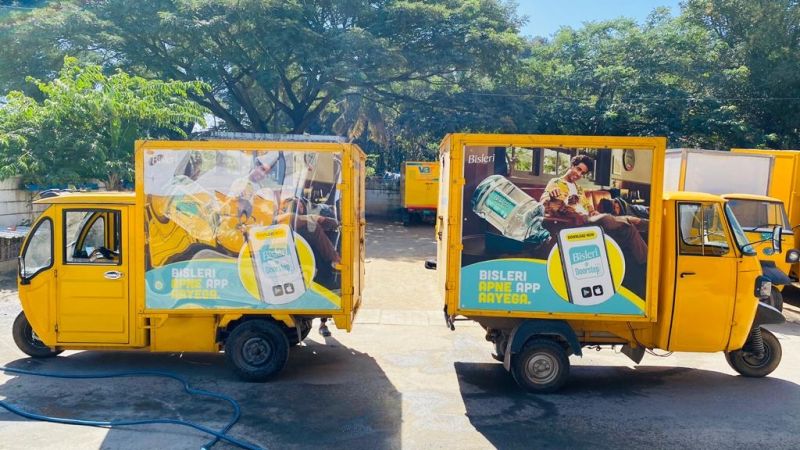
The Moonshot: An OS for India’s Last-Mile Logistics
Looking ahead, Peter sees two powerful, independent, yet synergistic engines of growth.
For 3ev Industries, the goal is to be the undisputed leader in the manufacturing and sales of premium, purpose-built electric 3-wheelers. This includes expanding their innovative e30C conversion kit business, which retrofits existing ICE vehicles into EV vehicles.
Peter sees a massive future in their aftermarket service division, 3C (Charging, Care, and Conversions). He envisions this recurring revenue business, which includes Battery-as-a-Service (BaaS) and maintenance contracts for their own and other OEM vehicles, eventually becoming 50% or more of 3ev’s total revenue.
For 3eco Systems, the moonshot is even grander. Having built the system, the processes, and the technology stack to master their own fleet, the next logical step is to offer it to the world.
“We are increasingly being asked to manage 3rd party resources as well,” Peter confirms. The long-term vision is for EPRO to evolve into a full-fledged SaaS platform and the go-to operating system for any company in India needing to manage a hyperlocal logistics fleet.
Peter’s journey is a testament to the power of seeing a problem with fresh eyes. His business model is built on the conviction that in a market as complex as India, technology alone is not the answer. Lasting success requires a deep understanding of economics, a commitment to all stakeholders, and a relentless focus on the physical, human, and digital systems that create sustainable value.

